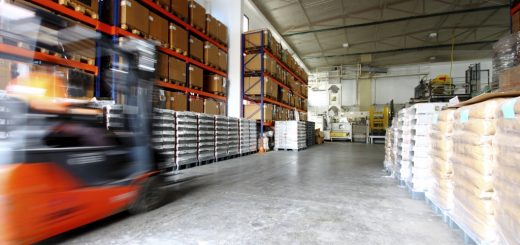8 Ways to Modernize Your Supply Chain Strategy – ChainDrive

In 2023, supply chains must adjust to the dramatic changes in consumer demand, congested ports, and chaotic distribution centers. This means that the retail supply chain and supporting logistics must adapt to these volatile market conditions. The retail supply chain must be agile and flexible to provide end-to-end visibility and serve customers with an omnichannel approach. This reduces friction experienced by customers during the buying cycle.
Supply chain modernization means integrating supply chains with data-driven technologies that enable businesses to make smarter logistics decisions. With modernized supply chains, different data inputs and outputs are evaluated and matched to identify actionable data to drive operations.
There are many ways to modernize your supply chain strategy, but here are a few key steps that can help you stay competitive in today’s rapidly changing business environment:
1. Assess your current supply chain:
Assess your current supply chain to identify areas for improvement. These may include inefficiencies, visibility gaps, and outdated processes. These initiatives help increase supply chain efficiency and reduce the cost of operations. This means you can remain profitable in a highly competitive business environment.
2. Effective Inventory Management
Integrated inventory management allows you to maintain appropriate product availability in your distribution and retail centers, especially when supply is limited. You can meet consumer demand with granular allocation management and an inventory tracking approach. It also eases the operational burden on your retail and fulfillment teams.
3. Embrace data analytics
Use data analytics to gain insights into customer behavior, supply chain performance, and inventory levels. As consumer demand and shipping capacity evolves, profitability information is critical to balancing customer expectations and business efficiency. This will help you make data-driven decisions and optimize your operations more efficiently.
4. Establish real-time visibility
Implement real-time tracking and monitoring of your supply chain processes to generate responsive data insights and better decision-making. This can be done through IoT devices, RFID tags, and other advanced tracking technologies. This helps them change the course of retail supply chain strategy based on shifting conditions, helping your supply chain stay agile and flexible.
5. Emphasize sustainability
Incorporate sustainability into your supply chain strategy by reducing waste, minimizing carbon footprint, and using environmentally friendly practices. Set sustainability KPIs in key logistics areas such as product design, material sourcing, and freight networks. These metrics will help you keep pace with consumer preferences for sustainability, and they provide granular data that can be applied across the company’s operations. This can help you reduce costs and improve your reputation among eco-conscious consumers.
6. Collaborate with suppliers and partners:
Refresh your supply chain by building partnerships that focus on strategy and service rather than profitability. Collaborate with your suppliers and partners to improve communication, build stronger relationships, and streamline processes. Prioritizing service-based partnerships can help you create a more agile and responsive supply chain that allows for more accurate data sharing and stakeholder alignment, enabling you to adapt quickly to changing market conditions.
7. Efficient Warehouse Management:
Warehouses are the central nodes of any retail supply chain. They can be bottlenecks in the supply chain or profit centers. Effective warehouse management is about optimizing inventory, people, and processes in the warehouse to reduce lead times while minimizing costs. Attract and retain the best talent with the skills and expertise to modernize your supply chain. You must evaluate warehouse operations from the ground up to improve processes and invest heavily in a well-oiled warehouse maintenance facility and faculty.
8. Increased Investment In Technology
Supply chain challenges can be overcome with speed, efficiency, and security. Identify and implement technology solutions that can help you achieve your goals. Use digital technologies such as modernized payment processes, artificial intelligence, machine learning, and blockchain to streamline your supply chain processes and gain greater visibility into your operations. All of these technologies provide end-to-end visibility into your supply chain system, process large volumes of data in real-time, and provide the security needed to keep everything running in an increasingly digital world.
Modernize Your Supply Chain Logistics with ChainDrive
In today’s ever-changing business world, it’s important to stay ahead of the curve and ensure your supply chain strategy is modern and efficient. With future disruptions imminent, supply chain modernization ensures you have the agility to navigate volatilities and continuously optimize your sourcing operations.
Move your supply chain from reactive to proactive by integrating data-driven tools and prioritizing end-to-end visibility. No matter how the market evolves, this strategy will equip you with a future-oriented approach and dynamic alternatives that will allow you to adapt to retail changes and stay ahead of potential impacts.
Overall, supply chain modernization provides numerous benefits. From increased efficiency and visibility to reduced costs and improved customer satisfaction, modernizing your supply chain can be a key success factor for your business in today’s fast-paced and competitive marketplace.
To learn more about how ChainDrive helps you modernize your supply chain logistics, request a free live demo with our software experts.





